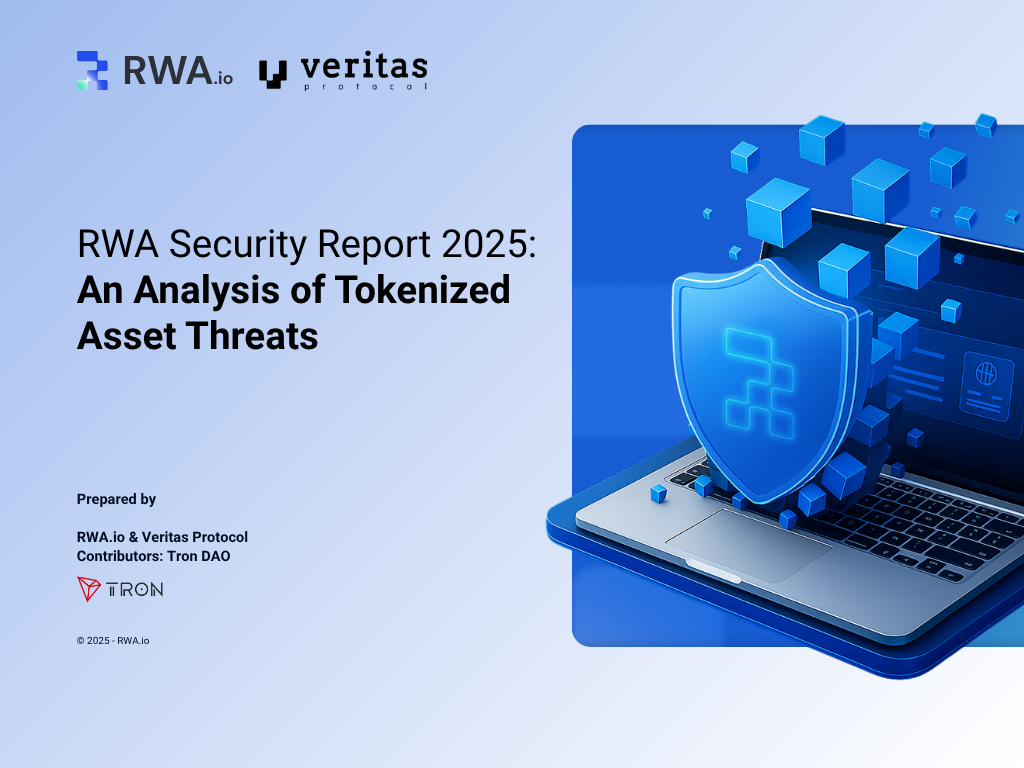[ newsletter ]
Stay ahead of Web3 threats—subscribe to our newsletter for the latest in blockchain security insights and updates.
Thank you! Your submission has been received!
Oops! Something went wrong. Please try again.
Explore honeypot pattern analysis to identify and avoid crypto scams. Learn about buy/sell traps, red flags, and detection strategies.





You know, the crypto world can be a bit of a wild west sometimes. There are tons of opportunities, but also plenty of folks looking to pull a fast one. One of the trickier scams out there is the 'honeypot.' It sounds sweet, right? Like a pot of honey just waiting to be scooped up. But in reality, it's more like a sticky trap designed to catch your investment and not let go. This article is all about understanding these honeypot patterns, figuring out how to spot them, and what you can do to keep your crypto safe. We'll break down how they work, the sneaky tricks scammers use, and how to use tools for honeypot pattern analysis to avoid getting caught.

Alright, let's talk about honeypots in the crypto world. Think of them like a sticky trap designed to catch unsuspecting investors. These aren't just simple scams; they're often built with clever code and psychological tricks to make you think you're onto a good thing. The basic idea is to lure you in, get you to buy a token, and then make it impossible for you to sell it or get your money back. It's a one-way street for your funds, and the scammers are waiting at the end.
A honeypot crypto scam is essentially a smart contract that looks legitimate but has hidden code. This code is designed to prevent you from selling the tokens you buy or withdrawing your funds. Scammers create these to trick people into investing, promising high returns or unique features. Once you're in, the contract's hidden rules kick in, trapping your assets. It's a nasty surprise, and even experienced crypto folks can get caught because these scams can be pretty sophisticated.
So, how do these things actually work? It usually starts with a promotion stage. Scammers will push their project on social media, in chat groups, or on forums, promising big profits. They might even show fake transactions to make the project seem active and trustworthy. Initially, they might even let you make small deposits or withdrawals to build your confidence. This is all part of the plan to get you to invest more. Once you've put in a significant amount, the trap is sprung. The contract's hidden logic prevents you from selling, effectively locking your funds away forever.
These schemes follow a pretty predictable path. It begins with the creation of a deceptive smart contract. Then comes the promotion phase, where scammers use hype and fake promises to attract investors. Early investors might see some success to build trust. The critical point is when investors try to sell or withdraw larger amounts, only to find they can't. Finally, the scammers typically 'rug pull,' meaning they drain the liquidity or all the funds from the project, leaving investors with worthless tokens.
It's like a digital bear trap; you step in, and the door slams shut behind you.
Here's a simplified look at the typical stages:
Spotting a honeypot before you get trapped is pretty important. These scams are designed to look good, but there are usually some clear signs if you know what to look for. It’s like looking for cracks in a seemingly perfect facade.
This is a big one. You might be able to buy the token without any issues, but when you try to sell it back, suddenly things get complicated. Your sell orders might just fail, or the transaction could get rejected entirely, even though your wallet clearly shows you own the tokens. It’s a classic move to keep your money locked in.
Sometimes, the actual code behind the token can give away the scam. If the code is hidden, super complicated, or has weird restrictions built-in, that’s a warning sign. Legitimate projects usually have clear, auditable code.
Be wary of projects that promise the moon. Honeypots often rely on aggressive marketing to lure people in with promises that sound too good to be true. Think guaranteed massive returns or revolutionary technology with no real proof.
Legitimate crypto projects usually have some basic building blocks. If these are missing, it’s a red flag. This includes things like clear documentation, information about the team, and genuine community engagement.
Scammers often try to make their contracts look legitimate by copying code from well-known projects or using common DeFi patterns. However, subtle differences or hidden functions can reveal their true intentions. Always assume the worst and verify everything.
Spotting a honeypot before you get trapped is key. It's not always obvious, but there are ways to check. Think of it like looking for tripwires before you walk into a room.
These are tools specifically built to scan smart contracts for common honeypot traits. They're like a first pass, flagging potential issues automatically. They look for things like hidden functions that stop you from selling, or unusual token minting rules. Many of these checkers use algorithms that have learned what to look for from past scams. They can save you a lot of time.
This is where you get your hands dirty. You'll want to look at the actual code of the smart contract. Scammers sometimes leave clues. Look for:
Sometimes, scammers will try to make their code look normal by copying from legitimate projects. But they might add a few lines here and there that are designed to trap you. It's like a wolf in sheep's clothing, but in code form.
Before you put real money in, you can test the waters. Tools exist that let you simulate a sell transaction. This means you can see if the contract actually allows you to sell your tokens, or if it throws an error or just does nothing. If you try to sell and it fails, or if the price you get is ridiculously low due to hidden fees or restrictions, that's a big warning sign.
Some honeypots don't stop you from selling immediately, but they put a timer on it. The contract might say you can only withdraw or sell after a certain block number or a specific date. This sounds like a feature, but it's often just another way to keep your money locked up until the scammers decide to pull the rug. Always check for any conditions related to time or block height that might prevent you from accessing your funds when you need to.

Scammers are pretty creative when it comes to setting up these honeypot traps. They don't just rely on one trick; they often combine several tactics to make their schemes look convincing and hard to escape. Understanding these common approaches can really help you spot them before you get caught.
One of the biggest lures is the promise of incredibly high, often guaranteed, returns. Think of it like this: if something sounds too good to be true, it probably is. Scammers will advertise daily or weekly yields that are simply not sustainable in any legitimate market. They might show fake profit charts or use testimonials from "satisfied" investors (who are often paid actors or bots). This plays directly on the desire to make quick money, pushing people to invest without doing proper research. It's a classic psychological trick, preying on the hope of getting rich fast.
To make their projects seem legitimate, scammers create a buzz. They'll set up fake social media groups, like Telegram or Discord channels, filled with bots and paid promoters. These groups are designed to look active and enthusiastic, with constant chatter about how great the project is. You'll see fake "success stories" and glowing reviews, often from people who don't exist or are paid to say positive things. This creates an illusion of widespread support and trust, making it harder for newcomers to question the project's validity. It's all about building a false sense of community and social proof.
Another common tactic is to copy the branding, website design, and even the whitepaper of a well-known, successful crypto project. They might change a few details or use a similar-sounding name to confuse people. This makes it easier to trick investors who are familiar with the legitimate project but don't look too closely at the imposter. They're essentially trying to ride on the coattails of established names to gain credibility. It's a form of digital impersonation, hoping you won't notice the subtle differences until it's too late.
This is where the "honeypot" aspect really comes into play. Scammers embed hidden rules within the smart contract that prevent you from selling your tokens or withdrawing your funds. These restrictions can be complex and hard to spot. For example, they might:
These restrictions are the core mechanism that traps your investment. They ensure that once you put money in, it's very difficult, if not impossible, to get it back. It's like a one-way street for your crypto. The goal is to keep your funds locked up so the scammers can profit. Understanding these hidden rules is key to avoiding honeypot crypto scams.
Scammers often use a combination of psychological manipulation and technical tricks. They create an environment that feels exciting and profitable, while secretly building in mechanisms to prevent you from ever accessing your money. It's a sophisticated deception that requires vigilance from investors.
Sometimes, the really sneaky honeypots aren't obvious from the get-go. They've got layers, and you need to dig a bit deeper to see what's really going on. This is where we look at the nitty-gritty of the smart contract itself, beyond just the basic checks.
Think of program ownership like who's in charge of the smart contract. In many legitimate projects, ownership might be renounced (meaning no one controls it anymore) or transferred to a decentralized governance system. If a contract still has a single, identifiable owner, especially one that can change critical functions or mint more tokens, that's a big flag. Scammers often keep ownership so they can pull the rug whenever they want. It's like leaving your house keys with a stranger – not ideal.
This one's pretty straightforward. The 'mint authority' is the entity that has the power to create new tokens. In a healthy project, this authority is usually burned or locked away after the initial token distribution. If the mint authority is still active and controlled by the project's creators, they can just print endless tokens, flooding the market and making your existing tokens worthless. It's a classic way to devalue everyone else's holdings to benefit themselves. Always check if this authority has been permanently disabled.
This is where things get really technical. Scammers can hide malicious code within a smart contract that only activates under certain conditions or is deliberately obscured. They might use complex functions, obscure variable names, or even rely on external, compromised contracts to execute their trap. For instance, a contract might look like it allows selling, but a hidden function could check if the seller is the owner or if a certain time has passed, then block the transaction. Analyzing this often requires specialized tools and a good understanding of Solidity, the programming language for Ethereum smart contracts. Sometimes, code might look like this:
pragma solidity ^0.8.0;contract DeceptiveContract { address public owner; mapping(address => uint256) public balances; constructor() { owner = msg.sender; } function deposit() public payable { balances[msg.sender] += msg.value; } function withdraw(uint256 amount) public { // Hidden logic to prevent non-owners from withdrawing require(msg.sender == owner, "Not the owner!"); require(balances[msg.sender] >= amount, "Insufficient balance"); balances[msg.sender] -= amount; payable(msg.sender).transfer(amount); } // Function that looks like it allows selling but is restricted function sellTokens(uint256 amount) public { // This function might have hidden conditions that prevent actual sale // or only allow the owner to execute it successfully. // For example, it might check a block number or a specific flag. if (block.timestamp < 1735689600) { // Example: A future date revert("Selling not allowed yet."); } // Actual selling logic would be here, but it's often missing or flawed. }}It's not always about finding outright malicious code. Sometimes, it's about spotting code that prevents legitimate actions, like selling, or code that gives the creator unfair advantages. The goal is to make sure the contract behaves as expected and doesn't have secret escape hatches for the developers. You can find more on identifying these scams at honeypot crypto scams.
Looking at these advanced aspects can really help you spot a honeypot before you get trapped. It takes a bit more effort, but it's worth it to protect your investments.
Alright, so we've talked about what honeypots are and how they try to trick you. Now, the big question: how do you actually keep your crypto safe from these things? It’s not always easy, but there are definitely steps you can take. Think of it like locking your doors and windows before you leave the house – it’s about being smart and cautious.
Before you even think about putting money into a new crypto project, do your homework. Seriously, don't skip this part. Look beyond the flashy website and the promises of getting rich quick. Check out the team behind the project. Are they doxxed (meaning their real identities are public)? Do they have a history in the crypto space, and is it a good one? Also, see if the project has a real use case or if it's just another meme coin with no real purpose. A lot of these scams pop up and disappear before you can even blink, so a little digging goes a long way.
Where you buy and sell your crypto matters. Stick to well-known, established exchanges and decentralized platforms. These places usually have better security measures in place and are less likely to list shady tokens that are actually honeypots. If a project is only available on some obscure, brand-new decentralized exchange you've never heard of, that's a pretty big red flag. It's like shopping at a flea market versus a department store – one is generally more reliable than the other.
This is a really practical tip. If you're looking at a new token or a project that seems a bit iffy, try interacting with it using a small amount of money first. Send a tiny bit of crypto to the contract or try to buy a small amount of the token. Then, immediately try to sell it back or withdraw it. If you can't sell or withdraw even a small amount, you've likely found a honeypot. It’s a low-risk way to test the waters before you dive in with a larger investment. Remember, even a few dollars saved is better than losing hundreds or thousands.
The world of crypto scams is always changing. Scammers are constantly coming up with new tricks and adapting old ones. What worked to catch a scam last year might not work today. So, it’s super important to keep up with the latest news and trends in crypto security. Follow reputable crypto news sources, join communities that focus on security, and pay attention to warnings about new types of scams. The more you know about how these scams operate, the better equipped you'll be to spot them before they get you.
The crypto space is exciting, but it's also a bit of a wild west. Scammers are always looking for new ways to take advantage of people, and honeypots are just one of their favorite tools. By being diligent, doing your research, and always staying a little bit skeptical, you can significantly reduce your chances of falling victim to these traps. It’s about being proactive rather than reactive.
So, we've talked a lot about how these tricky honeypot scams work, like how they can lock up your funds or make it impossible to sell. It's pretty wild how scammers use clever code and marketing to trick people. We also touched on how tools can help you spot these traps by looking at things like token ownership and if you can actually sell the tokens. Remember, doing your own research is key. Always check the contract code if you can, look at who's behind the project, and be super wary of deals that seem too good to be true. Staying informed and using the right tools is your best bet for keeping your crypto safe out there.
Imagine a trap set with sweet honey to catch a fly. In crypto, a honeypot is like that – a digital trap. It looks like a regular, promising crypto token or project, but its hidden code is designed to trick you into buying it. Once you've bought in, the code stops you from selling or taking your money out, basically trapping your investment.
Scammers use a few tricks. Sometimes, they write code that just won't let you sell the token after you buy it, even if your wallet shows you own it. Other times, they might keep control of making new tokens (mint authority), so they can flood the market and make your tokens worthless. They might also not provide any real way to trade it, like not putting up enough money to buy it back, making selling impossible.
Watch out for tokens that promise super high, guaranteed profits really quickly. If you can buy a token easily but can't find any way to sell it, that's a big warning sign. Also, if the project's code is hidden or looks really confusing, or if the team behind it is totally anonymous, be very careful. High transaction fees that don't make sense are also suspicious.
Yes, you definitely can! There are tools called 'honeypot checkers' or 'scanners' that help you look at a token's code and how it works. They check for things like whether you can actually sell the token, if the creator can make unlimited new tokens, and if there's enough money available to trade. It's like looking before you leap.
While many scams trick you into sending money, honeypots specifically trap your investment *after* you buy. Think of a 'rug pull' where the creators just disappear with the money – a honeypot is more about locking your funds inside the token itself. Other scams might just be fake promises, but honeypots use code to physically prevent you from getting your money back.
Absolutely! Using specialized tools that scan smart contracts is a smart move. Websites and services exist that can analyze tokens for common honeypot traits, like checking if the creator has control over the token supply or if selling is blocked. Even checking the project's community and looking for any warnings on forums can help you spot trouble before it's too late.


